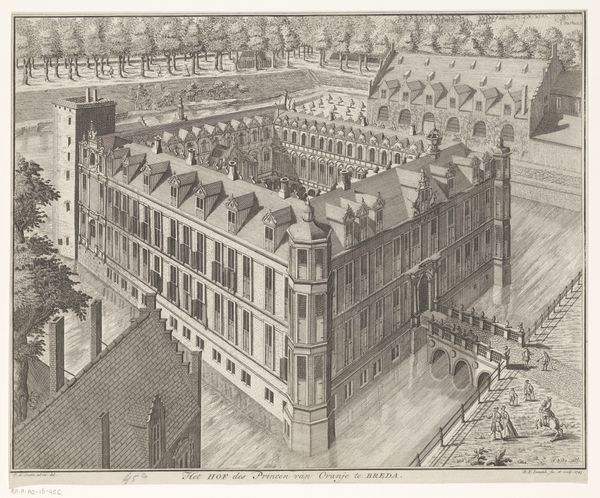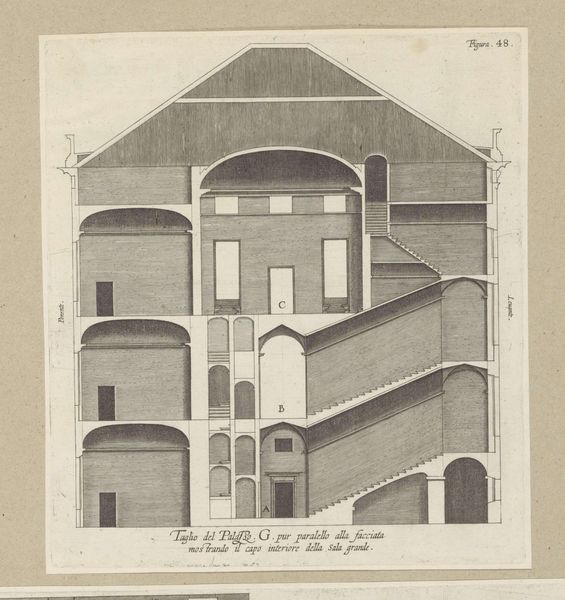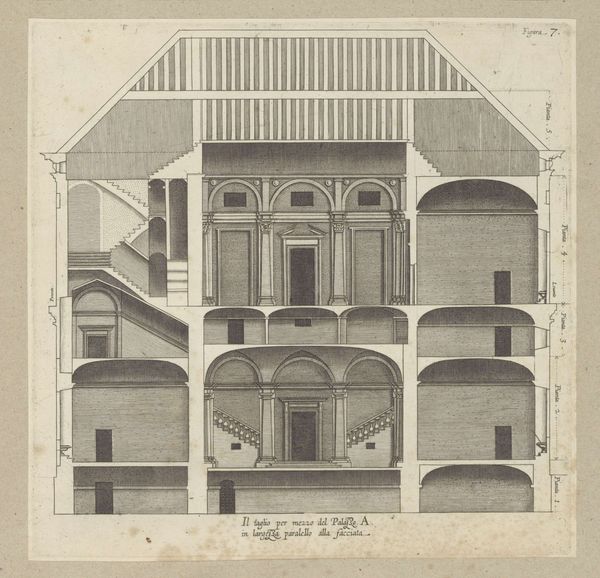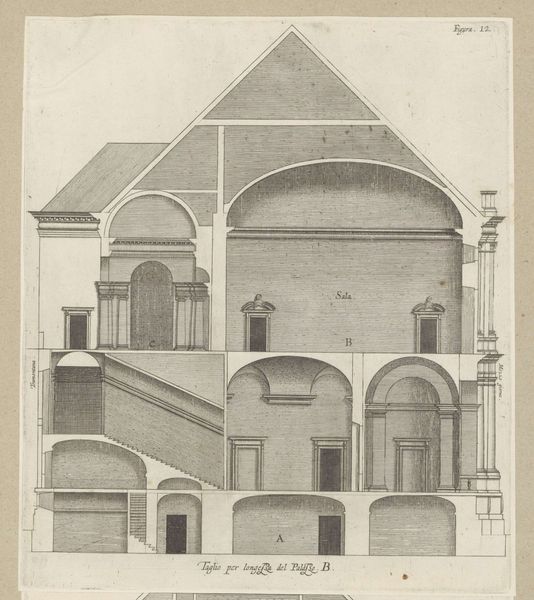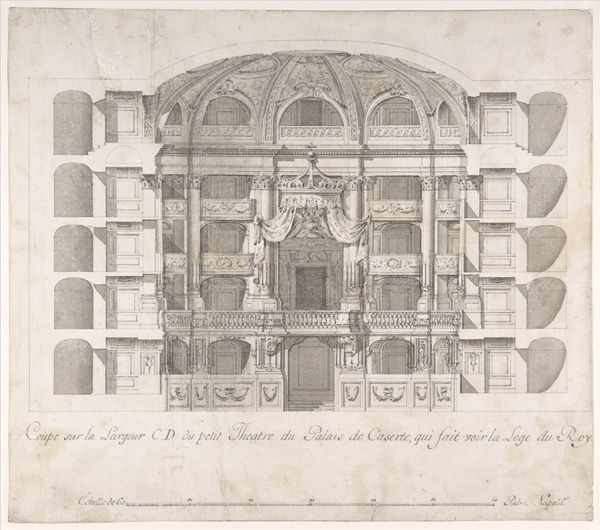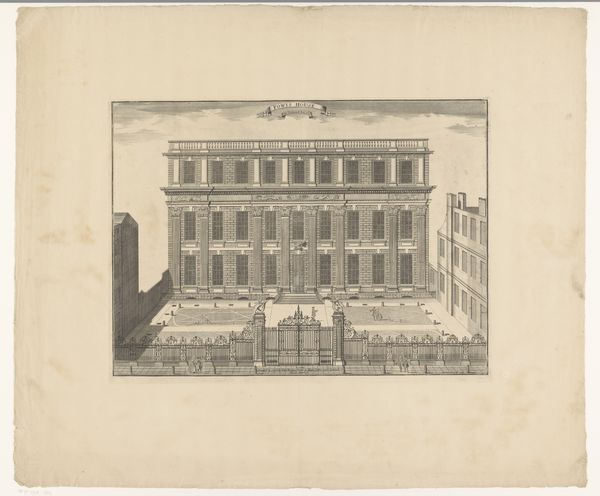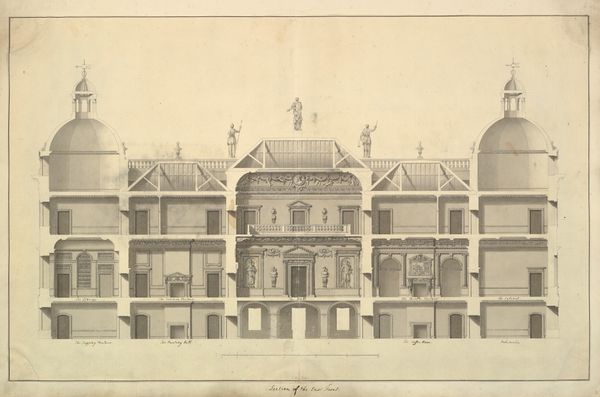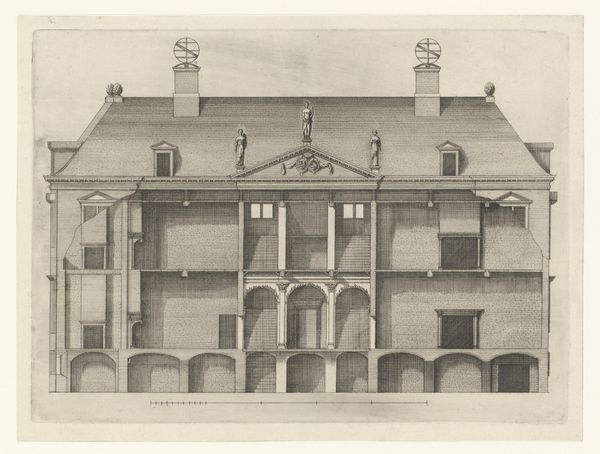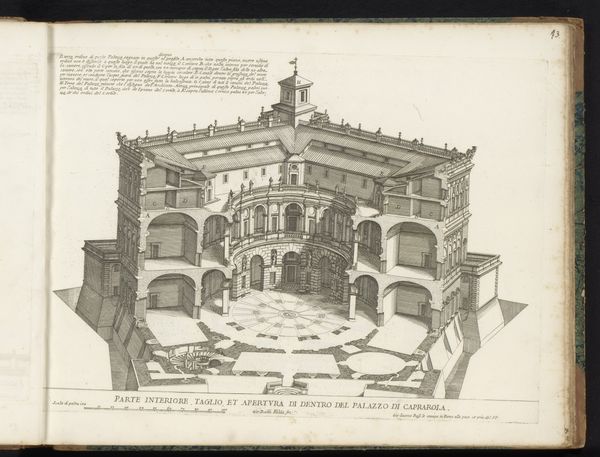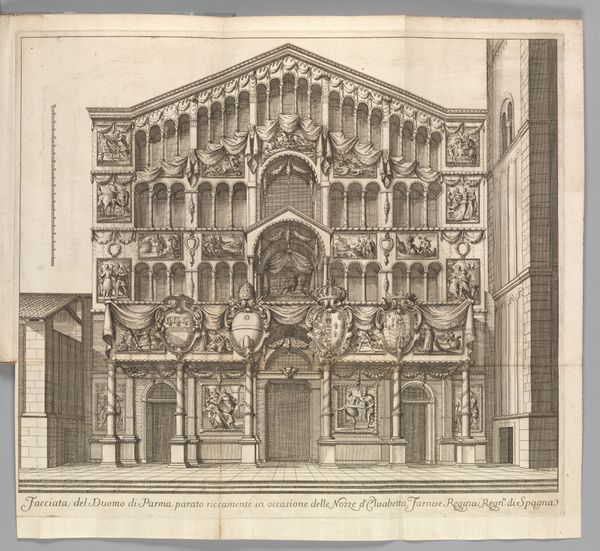
Speculum Romanae Magnificentiae: Farnese Palace 1570 - 1624
0:00
0:00
drawing, print, engraving, architecture
#
drawing
# print
#
11_renaissance
#
romanesque
#
italian-renaissance
#
engraving
#
architecture
Dimensions: sheet: 15 1/16 x 18 11/16 in. (38.2 x 47.4 cm) plate: 15 1/16 x 17 9/16 in. (38.2 x 44.6 cm) mount: 17 1/2 x 21 7/8 in. (44.5 x 55.6 cm)
Copyright: Public Domain
Editor: Here we have Francesco Villamena's "Speculum Romanae Magnificentiae: Farnese Palace," a drawing and print created between 1570 and 1624. It's fascinating how the artist renders the architecture, almost like a deconstructed model. What statements do you think Villamena is making? Curator: Well, consider the context. The "Speculum Romanae Magnificentiae" was all about showcasing Rome's grandeur. But it wasn’t a neutral act. This print, with its detailed cross-section, visually participates in a power dynamic. Think about who this palace was built for – the Farnese family, deeply entrenched in papal politics and immense wealth. The palace literally embodies power structures. Editor: So, by showcasing the architecture, the artist indirectly reinforces those social structures? Curator: Precisely. The seemingly objective representation masks the realities of inequality and privilege that allowed such opulence to exist. Look at the details, the scale. Who has access to such spaces? Whose labor constructed them? Art doesn't exist in a vacuum; it’s interwoven with socio-political fabrics. Even depictions of buildings carry weight, reproducing ideas of order and power. Editor: I see what you mean. I initially appreciated the technical skill but hadn't considered its role in perpetuating existing power structures. It does make me rethink my understanding. Curator: Exactly. By engaging critically, we can challenge established narratives and see these historical artworks through a more intersectional lens, thinking about how gender, class, and access play a part. Editor: That's incredibly helpful; I’ll never look at architectural prints the same way again. Thanks! Curator: My pleasure. It’s about continuously questioning what we see and how it connects to broader societal structures.
Comments
No comments
Be the first to comment and join the conversation on the ultimate creative platform.

